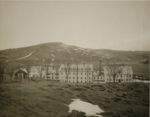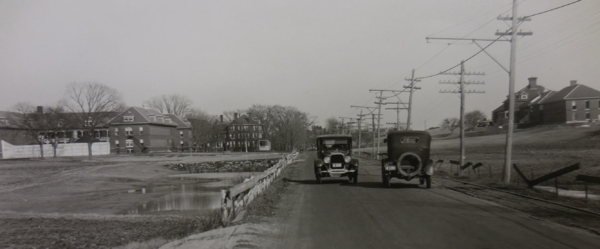Main Page
__NOTITLE__
|
We need your help!
|
| Overview · Editing · Help · How To Upload Images |
Mission Statement
The Mission
The mission of this site is to archive both historical and current information on asylums across the United States and around the world.
The Statement
This site is dedicated to the history of asylums in all forms. The term of asylum is applied to not only what is commonly thought of: mental hospitals, but can also be applied to sanatoriums, state training schools, reform schools, almshouses, and orphanages. These institutions have and continue to play a major part in today's society.
Everyone throughout the United States and in many other countries has in one way or another felt the touch of these institutions. These places have both directly and indirectly affected people and their families. They have shaped lives and created many popular myths about them.
With all that in mind, this site was created to help in the historical research of any institutions that can be classified as an asylum. It was created for both serious researchers, those who are doing genealogical research, and people with an interest in asylums.
Featured Article Of The WeekCoös County FarmIn November 1866, Coös County purchased the Isiah Pickard farm on the banks of the Connecticut River to establish the county’s poor farm, using the existing farmhouse buildings to house the poor, insane, prisoners. In 1867, a three-story addition to the original farmhouse was completed to create the Almshouse, with the capacity for 100-120 people. The poor farm sat on 575 acres, land that provided work and food for the inmates. The Superintendent’s residence, Almshouse, and the building used for the insane were connected and form a long row of wooden buildings. Various barns, carriage houses, and agricultural outbuildings scattered the farmland. The Almshouse eventually grew to four-stories, with the east half being occupied by women and west by men. There were separate dining rooms for each sex, and a large women’s sitting room, which was also used as an assembly room for religious meetings. There was also a school room for children, though reports state that any orphans were eventually transferred to the Orphan’s Home at Franklin. Click here for more... Featured Image Of The WeekIn 1849, the townspeople of Hillsborough County, New Hampshire purchased farmland in Goffstown from a successful farmer named Noyes Poor. Poor’s Farm literally became the county’s poor farm, complete with an almshouse and a house of correction. Existing buildings on the farm were refit to house the county’s poor. Additional buildings were eventually erected to house the growing population at the poor farm, including a larger almshouse and insane asylum.
|
Recent Message Board PostsHello,
In this space you normally would see our forum. This had been a hold over from earlier days before we had a Facebook page. Just prior to our server issues regular users had been barely using the forum with the majority of new posts from anonymous users asking genealogy questions or spammers. The old forum software does not work with our new version while the new forum software does not carry over old comments to the new forum. As a result, the forum will be discontinued in favor of our Facebook page. If you have questions or comments you can ask them there. Upcoming Events Calendar<calendar name="Upcoming Events" disablestyles disableaddevent/> |
Featured Video
Asylum News (news you can edit!)
February 7, 2016 Clarinda struggles to fill former hospital
- The 128-year-old former mental health institute in the small southwest Iowa city of Clarinda isn’t your typical real estate opportunity, and so far no one is rushing to move in. More than seven months after the state closed the Clarinda Mental Health Institute, much of the sprawling building remains empty, including entire floors that haven’t been used in decades.
February 1, 2016 Efforts continue to preserve other parts of former Peoria State Hospital grounds
- Christina Morris happily remembers Sunday morning breakfasts with her grandparents, followed by visits to the peaceful cemeteries on the grounds of the Peoria State Hospital, where some family members are buried. “My interest with the state hospital started when I was about 7 years old,” Morris said in a recent interview. “When I would come onto the grounds (my grandfather) would say that this was a place of special people. (By special) I thought he meant giants, because these buildings were so big and beautiful and immaculate to me. I just was enamored by how beautiful it was.”
January 7, 2016 That Time The United States Sterilized 60,000 Of Its Citizens
- Not too long ago, more than 60,000 people were sterilized in the United States based on eugenic laws. Most of these operations were performed before the 1960s in institutions for the so-called “mentally ill” or “mentally deficient.” In the early 20th century across the country, medical superintendents, legislators, and social reformers affiliated with an emerging eugenics movement joined forces to put sterilization laws on the books.
January, 6, 2016 Pa. hires firm to develop plan for Harrisburg State Hospital site
- Harrisburg, PA-The state has hired a Lancaster planning company to help it figure out what to do with the former Harrisburg State Hospital, which closed 10 years ago. Since closing in 2006, the hospital complex has housed state workers from the state police, Department of General Services and the Department of Human Services. It is now part of the larger DGS Annex property, which encompasses 303 acres across Harrisburg and Susquehanna Township.


